Technology
Best laptops for coding & programming 2024: Powerful portable computers
By investing in one of the best laptops for coding and programming we can create games, earn money by enhancing e-commerce platforms for our careers and invite a whole new world of STEM learning to kids. All while being on the go, instead of tied to a desk in the office or at home.
But not all laptops and notebooks are created equally though, and you will need to keep your wits about you when choosing a laptop for coding and programming. This is especially true with Amazon's Prime Day sale coming up; you are bound to be tempted by plenty of seductive deals. Two areas we'd recommend investing in is a laptop with a powerful central processing unit (CPU) and a decent speed and capacity of RAM. Being limited by your ability is one thing, but after a while of learning you'll want to fly with your coding, not be hindered because you've invested in a laptop spec a grade lower than you ideally need.
If you're working on games programming it might be worth considering a laptop with a dedicated graphics card too, instead of integrated graphics. This helps reduce the load on the processor and takes advantage of graphics-hungry processes.
Laptops with large screens are also easier to use for software development, but all laptops have the ability to be plugged into external monitors too, so the grab-and-go approach is more feasible with a powerful laptop.
Not sure where to start? We also have a guide covering the differences between coding vs programming, a beginner's guide on how to learn to code, and a guide to the best online coding courses so you can get started wherever you are in the world.
The quick list

Best laptop overall
The MacBook Pro is a machine that's ideal for programmers with plenty of screen real estate and a powerful processor to handle workloads with ease.

Most powerful laptop
The best of the best is the 16-inch MacBook Pro (M3 Max), which is exceptional in every category

Best Windows laptop
The XPS 16 9640 boasts great performance and a stunning screen if you're willing to compromise on minor bugbears.

Best for coding on the go
The MacBook Pro 14-inch (M3 Pro) has a stunning screen and powerful hardware for excellent portable power.

Best cheap laptop for coding
The new Microsoft Surface Laptop is a fantastic device that packs plenty of high-end hardware into a small chassis for less than $1,000.

Best lightweight laptop
The HP Elite Dragonfly Gen 4 is a sophisticated laptop that weighs just over 2 lbs and looks the part too.
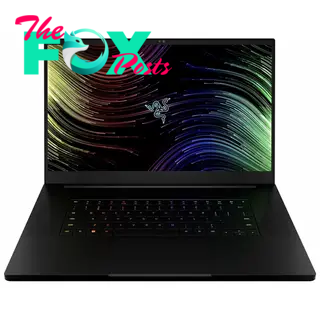
Best gaming laptop
The Razer Blade 16 is engineered for high performance and includes a powerful GPU for AI or visual workloads.

Best hybrid laptop
This dual-screen OLED laptop can unlock your portability while you're on the move, so long as you don't need to run anything too intensive.
Best laptops for coding & programming we recommend in 2024
Why you can trust Live Science Our expert reviewers spend hours testing and comparing products and services so you can choose the best ones for you. Find out more about how we test.
Best laptop overall

✅ You need a big screen: You want full immersion at all times, especially when there's option to use an external monitor.
✅ You want really lengthy battery life: This laptop will last you well over a full day when you're using it.
❌ You don't need to run demanding workloads: The M3 Pro chip offers more firepower than the vanilla M3 — which itself is a great CPU.
❌ You need something more portable: There are smaller and lighter devices out there, including the 14-inch MacBook Pro.
🔎 The MacBook Pro 16-inch (M3 Pro) is a terrific device for programming and has plenty to offer if you need something with plenty of power. ★★★★½
Ideally, programmers will need the best components and a healthy dose of RAM for a laptop that can handle the right sort of workload. There's little that you can put past MacBook Pro 14-inch (M3 Pro) given its custom Apple silicon is among the best that money can buy.
It also comes packaged with 18 GB RAM as a minimum, as well as integrated graphics cable of handling any machine learning or artificial intelligence (AI) related tasks. That all comes packaged with a sharp 16-inch Liquid Retina XDR display that can shine incredibly brightly — and a rich collection of ports such as HDMI and Thunderbolt 4 ports to keep you connected at all times. Beyond its core hardware, we are also impressed with the battery life MacBook Pro 16-inch (M3 Pro), which Apple claims can reach up to 22 hours — although in reality this is much more likely to reach the high teens. The MacBook Pro 16-inch (M3 Pro) also comes with a fast charger as standard.
You may well consider the MacBook Pro 14-inch (M3), which is powerful enough to handle compiling tasks while also being suitable for coding on the go — but you get that little extra firepower with the MacBook 16-inch (M3 Pro). You also benefit from a much larger display to really immerse yourself in your work. It's less versatile, for obvious reasons, but still light enough to transport reasonably comfortably and work on the move — you won't need to worry much about plugging it into an external monitor either where none is available.
This is not a cheap laptop, however, and might be considered overkill if you don't require a machine that can handle the more intensive tasks, in which case you should consider the M3 version — which is still plenty good enough.
| Attributes | Notes |
|---|---|
| Design | The largest MacBook you can buy with a stunningly immersive display |
| Functionality | Has everything you could ask for from a premium MacBook |
| Performance | Excellent performance but you can upgrade to the M3 Max for ultimate firepower |
- Back to the top ⤴
Most powerful laptop for programming

✅ You want the best money can buy: There's no competing with the M3 Max chip for intensive programming workloads.
✅ You want to work with visuals: The immersive 16-inch display is perfect for game development or other graphics-based work.
❌ You are striving for value: The M3 Max MacBook is very expensive, and the base M3 model can handle most you throw at it.
❌ You need a portable machine: There are much lighter and smaller machines out there than can handle what you need them to.
🔎 The MacBook Pro 16-inch (M3 Max) is the ultimate powerhouse and effectively a portable workstation — but only worth it if you need the best of the best. ★★★★
The MacBook Pro 16-inch (M3 Max) is an absolute beast and the most powerful laptop that a coder or programmer can buy — but it comes at a heavy cost.
The M3 Max chip is the best Apple has to offer right now and barely breaks a sweat no matter what you throw at it — including the most intensive machine learning model training tasks. The M3 Max also comes with a 30-core GPU to handle and graphics rendering or AI workloads, so you can guarantee you have a machine set up for anything, Indeed, whether you work with graphics, with AI, or compiling code on a daily basis, this laptop can take on the world and leave you with plenty of capacity to spare. That, coupled with its excellent battery life, which is roughly 18 hours according to sister site LaptopMag.
You also benefit from one of the best displays that you can find in a laptop, which is particularly useful if you're working with visuals or in game development. Its GPU core count also means you can plug it into several external monitors and expect things to continue running smoothly, depending on how you need to use the device.
It's worth saying, however, that most professional software engineers or developers will be just fine using the M3 Pro MacBooks or even the base M3 model, depending on their specific needs. The M3 Max is really only reserved for those who either have the cash to burn or want a machine that can take on the most intensive tasks. In that sense, if you're striving for value, we'd look elsewhere — given you may end up having a lot of spare capacity that goes unused.
| Attributes | Notes |
|---|---|
| Design | Great minimalist design |
| Functionality | Heavy and not as compact as the smaller MacBooks but plenty of ports |
| Performance | Unrivalled performance — but verges on overkill |
- Back to the top ⤴
Best Windows laptop for programming
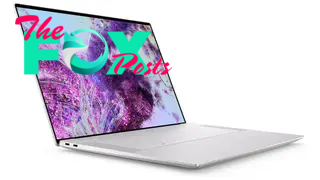
✅ You want a machine that can handle anything: The XPS 16 can take on almost everything thanks to state-of-the-art hardware.
✅ You need an OLED display: With a 4K resolution, you're going to love the deep inky blacks and vibrant colors of the XPS 16's panel.
❌ You want a lighter machine: Despite narrow bezels, the 16.3-inch panel means the XP 16 is a bit of a monster and isn't as portable as others.
❌ You want a more conventional design: While it looks great, the keyboard and trackpad will take some getting used to — and won't be for everybody.
🔎 The Dell XPS 16 9640 will blow you away with great performance and a stunning screen — if you're willing to compromise on one or two minor bugbears. ★★★★
Dell's newly redesigned XPS family of laptops has taken the line of premium Windows displays in a new direction — bumping up the screen size and also packing plenty more into a stylish package.
The new Dell XPS 16 9640 replaces the previous 15-inch version and includes the latest components — including an Intel Ultra 7 155H CPU and Nvidia GeForce RTX 4070 GPU — and a stunning 4K OLED display. That said, it's pricy and can actually end up being more expensive than the most powerful MacBook Pro, depending on your specific configuration, but if your heart is set on programming in Windows there's little that can beat it.
The new minimalist design isn't for everybody, and the gapless keyboard can take some getting used to — as well as the "invisible touchpad" that relies on haptic feedback. But style-wise, it does come in two great colors including the white-and-silver version as well as the darker graphite coating, which gives it an air of brooding sophistication. The 4K panel is also remarkable and comes with a smooth 90 Hz refresh rate — which is better than the standard 60 Hz and offers a much nicer experience.
Despite plenty of firepower on offer, the XPS 16 also lacks some functionality; its complement of ports includes just a microSD card reader and USB-C ports — with no HDMI or USB-A. There is a mini dock that comes with it but this isn't ideal if you're looking for a clutter-free experience while programming on the move.
The XPS 16 9640 is an immensely powerful machine and can handle almost everything you throw at it including 3D rendering, thanks to the GPU, and AI workloads, in light of the neural processing unit (NPU) packaged into its processor. But you should be wary of the pricing, and consider whether you need this much power. There are, ultimately, weaker configurations available for much less — as well as more portable Windows devices if you prefer using a more compact and lighter device while coding.
| Attributes | Notes |
|---|---|
| Design | Sleek and sharp design |
| Functionality | Lacks ports and has a bit of a learning curve |
| Performance | As good as you can get in a Windows machine |
- Back to the top ⤴
Best for coding on the go

✅ You want a compact and powerful MacBook: This laptop strikes the perfect balance between higher-end performance and portability.
✅ You want more firepower than the base version: The M3 Pro chip can take on far more than the vanilla CPU, including AI and graphics tasks.
❌ You need a large screen: You get the best out of a MacBook's screen with the immersive 16-inch version.
❌ You don't need too much power: Grabbing the MacBook Air 13-inch (M3) is far from a downgrade — and it's much more portable and compact.
🔎 The MacBook Pro 14-inch (M3 Pro) can give you plenty of power in a package that will feel lightweight and compact — just make sure you actually need the performance levels you will get with the M3 Pro. ★★★★½
While we were considering recommending the MacBook Air 13-inch (M3) as a great laptop for coding on the go, it's limited at the very highest end. For a little bit extra in cost, you get that reassurance with the MacBook Pro 14-inch (M3 Pro) that makes it more suitable and versatile for the majority of programming workloads — including any AI or visual work you may want to take up.
We feel the MacBook Pro 14-inch (M3 Pro) combines the compactness and portability of the much smaller form factor with some of the best internal hardware you can find in a laptop right now.
The M3 Pro CPU does sit rather awkwardly in between the M3 and M3 Max devices, but you can get plenty of extra firepower, which is ideal for programmers or game developers, with this chip than you can with the base model — and you don't need to break the bank for it either. Creatives, too, will especially appreciate the extra cores and 18 GB unified memory, while you will also benefit from 512 GB SSD storage — configurable up to 4 TB so you don't need to carry a portable hard drive with you.
Although you lose out on some display resolution with the 14-inch version of the MacBook Pro, you still win out overall when it comes to how versatile the machine is, and it comes with a great battery life too — making it ideal for using on the go. You don't lose out too much on the display either, given it features the same crisp Liquid Retina technology as in the 16-inch versions.
The MacBook Pro 14-inch (M3 Pro) is somewhat a great balance to strike between a device that can handle high demands while also being a great option for those looking to work while travelling or away from the desk for extended periods. We'd recommend the MacBook Air 13-inch (M3) for that little extra portability, but you do lose out slightly in terms of performance if you normally work with highly intensive tasks.
| Attributes | Notes |
|---|---|
| Design | Same great build and design quality you have come to expect |
| Functionality | Plenty of ports in this portable package |
| Performance | Excellent performance thanks to the M3 Pro chip |
- Back to the top ⤴
Best budget laptop
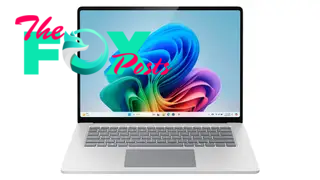
✅ You want exceptional value: For under $1,000 you get excellent performance in a compact package.
✅ You plan on working on the go: The Surface Laptop 7 is thin, light and runs really cool while on the go thanks to its NPU.
❌ You want an OLED device: The LCD panel is strong but won't match up with the vivid colours and inky blacks of OLED technology.
❌ You want something with more versatility: You may want something you can use as a tablet, or with more ports than the 13-inch Surface Laptop.
🔎 The Microsoft Surface Laptop 7 (13.8-inch) offers exceptional value for money — with high-end components and an excellent overall build quality in under $1,000. ★★★★½
Microsoft has just refreshed its range of Surface Laptop devices — which is now in its seventh generation — with 13.8-inch and 15-inch versions that come fitted with powerful internal hardware in a compact and portable package. The AI-ready PCs are a great fit for programmers on a budget who want to make the most of their hard-earned dollars while finding a machine that's powerful enough to run demanding tasks.
We especially love how portable the 13.8-inch version is, weighing almost 3 lbs — and it comes with a high-end ARM-based Qualcomm chip that rivals Apple's custom silicon, alongside a crisp LCD touchscreen display. All of this comes at just under $1,000 — which is a fantastic deal given how much many high-end machines can go for. There are one or two compromises you will be making, however, including the fact you don't get as much storage space with this configuration — just 256 GB.
There's also the fact that the new Microsoft Surface Laptops are, unfortunately, a little plain-looking to the eye. Microsoft has also ditched the soft Alcantara material that lines the keyboard and trackpad for an all-aluminum design that sits in line with other machines. As a result, this clean-cut and minimalist design lacks some oomph and won't be for everyone, especially those looking for a laptop with a bit more flair. But that says nothing about the same fantastic build quality you should expect from high-end Surface machines, and they certainly feel great to use regardless.
Thanks to the in-built NPU, you also benefit from amazing battery life and performance can reach new heights thanks to the fact you can offload a lot of intensive workloads to this smart little component, which traditionally a CPU or GPU may have handled. For under $1,000 you could do much worse than the Microsoft Surface Laptop 7, although consider upgrading to a more beefed up version for a little more storage space.
| Attributes | Notes |
|---|---|
| Design | Minimalist design can appear plain |
| Functionality | Lacking in ports but highly portable and compact |
| Performance | Great components and an NPU |
- Back to the top ⤴
Best lightweight laptop for coding
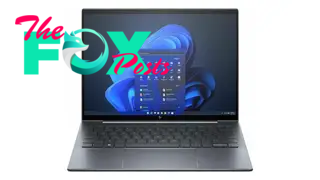
✅ You want the lightest high-end laptop: At 2.2 lbs, there's little beating the HP Elite Dragonfly G4 for how lightweight it is.
✅ You don't need the most powerful machine: Last year's components and no GPU mean it's slightly underpowered — but perfect for most workloads.
❌ You want a larger display: Its 13.5-inch screen is on the smaller side and won't be suitable if you need something more expansive.
❌ You want the best value for money: Despite its fantastic build quality and weight, there will be options out there that offer more power for less.
🔎 The HP Elite Dragonfly G4 is the last in a fantastic series of ultra-lightweight notebooks that marry style with substance in a compact unit. ★★★★½
The HP Elite Dragonfly line of business notebooks was an exceptional family of devices that marry style with substance — boasting an exquisite design and build quality coupled with premium components for a high-powered overall experience. That is until HP reportedly discontinued it. But you can still pick up the final entry in the family, the HP Elite Dragonfly G4, for under $2,000 — and it's plenty powerful to run many programming workloads.
For something so light to feel so premium is also a boon — but has, by now, come to be expected from a manufacturer that specializes in versatile machines. Not only does it only weigh just 2 lbs approximately but it includes a full plethora of ports including two USB-Cs with Thunderbolt 4, a USB-A port with Power Delivery, HDMI and a headphone / mic combo jack — which is far more than you may expect in even many high-end 16-inch laptops. This really is a laptop unlike many others.
Despite the HP Elite Dragonfly Gen 4 featuring the previous generation CPU, we would still recommend it as the best lightweight laptop you can use. The platform at the heart of the HP Elite Dragonfly G4 should be capable enough of handling moderate-to-heavy workloads, but the lack of a GPU might also bite if you want something that can lean into the machine learning space or if you wish to work with visuals. Similarly, the display is nothing to scream about at the sight of OLED panels but offers clear and crisp visuals.
There's little putting past it for the majority of tasks you'll need a high-end machine for — and ultimately it's not going to be beaten for how lightweight it is. If you can move past the lack of state-of-the-art components in a machine that is, by now, approximately a year old, you will have a fantastic device at your hands that is perfect for using to work on the move.
| Attributes | Notes |
|---|---|
| Design | Engineered to impress and stylish |
| Functionality | One of the lightest laptops ever made |
| Performance | Strong performance but specs are slightly outdated now |
- Back to the top ⤴
Best gaming laptop

✅ You need something to run the most intense workloads: A high-end GPU and powerful CPU make this an exceptionally high-performing machine.
✅ You routinely work with graphics: Pairing its Nvidia graphics card with a stunning QHD+ 120 Hz OLED screen makes it a must-have.
❌ You want a portable laptop: This is one of the heavier and bulkier laptops in our guide and isn't suitable for working on the move.
❌ You're working to a budget: The Razer Blade 16 will set you back a fair whack, especially if you don't need something this powerful.
🔎 The Razer Blade 16 is an exceptional gaming laptop that can give your programming endeavors a massive boost — but be wary of its pricing and poor portability. ★★★★
Although a gaming laptop may not be your first instinct when looking for the best laptop for coding or programming, gaming laptops are engineered for high performance and smooth graphical output — and often come with stellar screens. That is certainly true for the Razer Blade 16 (2024), which is a fantastic laptop in its own right — and can give your coding endeavors a productivity boost – let alone a device that you can use to spin up the latest gaming titles. We especially love its relatively minimalist design given it's a gaming machine and impressively premium build quality — it looks stunning and it feels great to use.
Beneath the bonnet, its internal components are among the best you can find with an Intel Core i9-14900HX CPU paired with an extremely powerful Nvidia GeForce RTX 4080 graphics card. Alongside 32 GB RAM and 1 TB SSD, you have a machine built for workstation-level performance. The inclusion of the Nvidia chip also means you can comfortably rely on this machine for intensive video or 3D rendering tasks alongside compiling code. If you're working with visuals or graphics too, in game development, for example, you will also love the vibrance of the 16-inch OLED display. This technology tends to reproduce vibrant colors and exceptional contrast — with a black illumination level of practically zero — meaning deep and inky blacks. But it also benefits from a super-smooth 120 Hz refresh rate, and a QHD+ resolution.
There are a few downsides, including the fact it's a bulky machine and very heavy, so don't expect to have an easy time lugging it around with you if you're often on the move. It's also steeply priced — although we wouldn't go so far as to say it represents poor value for money, because you're still getting a monstrously powerful machine and a stunning display in a well-engineered and exquisitely designed chassis. Gaming laptops, however, also tend to have weaker battery life than their cousins designed purely for maximum productivity, so you'll need to bear that in mind too when considering the Razer Blade 16 or any gaming machine for that matter.
| Attributes | Notes |
|---|---|
| Design | Great build quality and pleasing on the eye |
| Functionality | Works better as a desktop replacement than something portable |
| Performance | Excellent performance thanks to high-quality components |
- Back to the top ⤴
Best hybrid/2-in-1 laptop
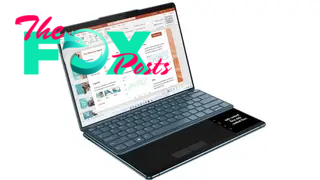
✅ You want a versatile machine: You can take the Lenovo Yoga Book 9i Gen 9 almost anywhere and swap between a variety of configurations.
✅ You want to work on the move: Its size and weight mean it's ideal for working while travelling or if you need to program without access to a monitor.
❌ You want to work with visuals: Despite plenty of real estate, there's no GPU and the processor is a little old by now.
❌ You want a larger single screen: You get two 13.3-inch screens, but you may prefer to work on just one much larger panel.
🔎 The Lenovo Yoga Book 9i Gen 9 takes some getting used to but will kick your productivity into overdrive thanks to its stunning dual OLED displays. ★★★★½
Although unusual, you can use the Lenovo Yoga Book 9i in a variety of configurations depending on your need — and it's an especially versatile laptop for programmers who both find themselves on the move and would rather work with a dual display. In that respect, the Lenovo Yoga Book 9i's dual-OLED form factor is a boon — and can be used as a conventional laptop, with the keyboard hoisted on the second screen, or as a tablet in single and dual-screen configuration, depending on your need and circumstance.
It's also a fantastically light and portable machine that you can easily carry around with you. It's in that optimum sub-3 lb bracket, weighing 2.95 lbs (1.34 kg) and is only slightly heavier than a MacBook Air 13-inch (M3). You won't be able to beat the HP Elite Dragonfly G4's weight, however, but it makes up for it with the double screen real estate at the side of conventional 2-in-1s or hybrid machines.
While we love its form factor, we wouldn't recommend using it if you need something more heavy-duty to handle the most intensive tasks that you can throw at it. It's fitted with an Intel Core i7-1355U CPU, which was among the best on release but is relatively underpowered now at the sight of the latest generation of Snapdragon, Intel, and Apple CPUs in the most powerful laptops you can grab.
There's also no dedicated GPU, meaning it won't live up to expectations if you want to work with any machine learning or rendering tasks. RAM that's limited to 16 GB also somewhat undermines its key strength — which is how good it can be at multitasking — but it's certainly more than capable of handling moderate-to-intense workloads if that's what you're looking for in a machine.
| Attributes | Notes |
|---|---|
| Design | Unique dual-display design with OLED technology and a portable keyboard |
| Functionality | You can use this device in several configurations for a variety of needs |
| Performance | Previous generation hardware and no dedicated GPU means it's not going to win out on any benchmarks, but it will do the job |
- Back to the top ⤴
Our expert consultant

Keumars is the technology editor at Live Science. He has written for a variety of publications including Space.com, ITPro, The Week Digital, ComputerActive and TechRadar Pro. He has worked as a technology journalist for more than five years, having previously held the role of features editor with ITPro.
Best laptops for coding and programming frequently asked questions (FAQs)
Which laptop is best for coding and programming?
We think the Apple MacBook Pro 16-inch (M3 Pro) is the best laptop for coding and programming due to its powerful programming power, excellent high resolution display, and brilliant keyboard which makes it a pleasure to type code into.
What kind of laptop do I need for coding?
We'd generally recommend a laptop with a high-end processor and a minimum of 8 GB RAM for lightweight coding and programming, or 16 GB minimum for more advanced tasks. More RAM is better suited to larger, more complex processes but 8 GB should be able to handle most basic demands. You'll also need something with a decent GPU if you want to work on the more visual development side.
What laptop screen should I use for coding?
Larger screens such as a 16-inch display are bigger and clearer and reduce eye strain, especially when working with long strings of code. However, this also reduces portability and battery life. If using external monitors for the majority of the time we'd recommend a slightly smaller screen on a laptop if you also need good portability.
What is the difference between coding and programming?
Coding is the term we use to cover writing in language that is specially designed for computer hardware. Code is usually written in short sections that go line by line, so the results usually look more like poetry at a glance than like written paragraphs.
Whereas programming is the umbrella term for a large discipline that covers a variety of jobs. A program is a complete, usually well organized assembly of code, art assets, sounds, and more that work together for a specific purpose.
Apple Macbook or Windows PC laptop, which is better?
Both types of laptop systems have their merits. Windows laptops generally have components that are easier to upgrade yourself, like storage and RAM, whereas Apple Macbooks can be developed in such a way that components which seem identical in spec on paper can perform much more efficiently.
How we test laptops

Choosing the best laptop for coding and programming could feel like a bit of a minefield, but much of it depends on how advanced your needs are. You may, for example, only need a low-budget machine if you're just starting out, or you could do with something that's more heavy duty with a powerful GPU if you're a seasoned software engineer or want to dabble in machine learning.
We test all our laptops to the same standard whether MacBook or Windows, running various benchmarks and tests — as well as getting hands-on with the machine — to determine what it's like using it and how it performs depending on what you might be looking for in a device. We run CPU and GPU benchmarks using Geekbench 6 to test a laptop's performance, while we run CrystalDiskMark to test how well its hard drive or SSD can handle data transfers.
Testing a laptop's display involves using a specialized display calibrator that can detect brightness levels, color accuracy, color volume, any undersaturation or oversaturation in the RGB space, as well as distortions against what we expect. We compare and contrast these results to determine how well the display may be suited to, say, video editing or other uses.
We also test the battery life of all laptops we review in a consistent way to make comparisons viable. We run a looped video in specific conditions with all automatic brightness and contrast settings turned off and we measure how long the laptop lasts before it runs out of battery.
Beyond benchmarking, we use these laptops day-to-day and run informal stress tests like playing several 4K YouTube videos at once, browsing, and using other applications a typical user might open. We also type with the device and get a general feel for what it's like carrying it around with us.
-

 Technology7h ago
Technology7h agoThere Is a Solution to AI’s Existential Risk Problem
-

 Technology9h ago
Technology9h agoUS pushes to break up Google, calls for Chrome sell-off in major antitrust move | The Express Tribune
-

 Technology13h ago
Technology13h agoPublic health surveillance, from social media to sewage, spots disease outbreaks early to stop them fast
-

 Technology15h ago
Technology15h agoTikTok, PTA host youth safety summit in Pakistan | The Express Tribune
-

 Technology18h ago
Technology18h agoWhy a Technocracy Fails Young People
-

 Technology1d ago
Technology1d agoTransplanting insulin-making cells to treat Type 1 diabetes is challenging − but stem cells offer a potential improvement
-

 Technology1d ago
Technology1d agoJapan's $26 billion deep sea discovery sparks serious environmental concerns | The Express Tribune
-

 Technology1d ago
Technology1d agoShould I worry about mold growing in my home?


























